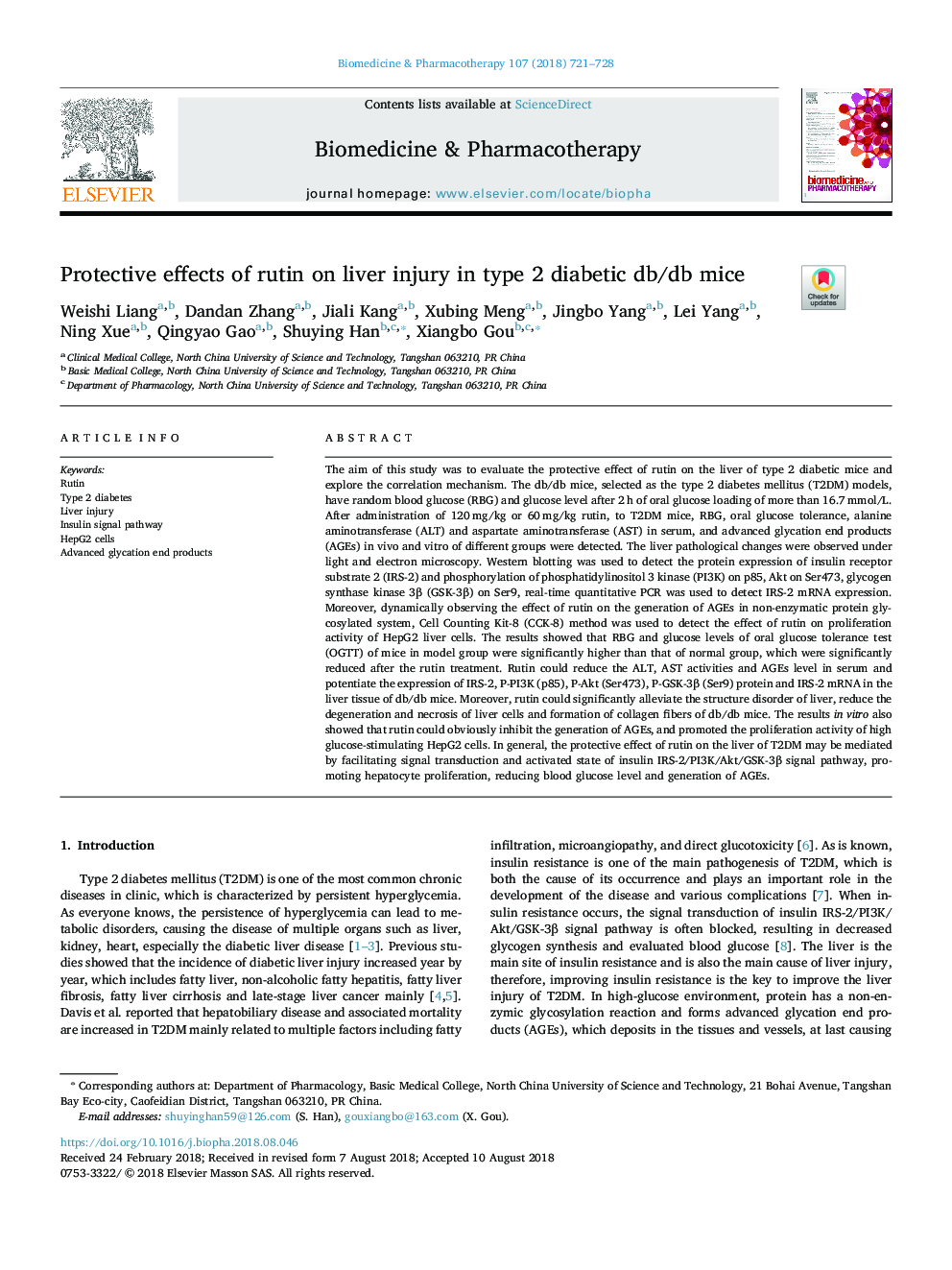| Article ID | Journal | Published Year | Pages | File Type |
|---|---|---|---|---|
| 9954860 | Biomedicine & Pharmacotherapy | 2018 | 8 Pages |
Abstract
The aim of this study was to evaluate the protective effect of rutin on the liver of type 2 diabetic mice and explore the correlation mechanism. The db/db mice, selected as the type 2 diabetes mellitus (T2DM) models, have random blood glucose (RBG) and glucose level after 2âh of oral glucose loading of more than 16.7âmmol/L. After administration of 120âmg/kg or 60âmg/kg rutin, to T2DM mice, RBG, oral glucose tolerance, alanine aminotransferase (ALT) and aspartate aminotransferase (AST) in serum, and advanced glycation end products (AGEs) in vivo and vitro of different groups were detected. The liver pathological changes were observed under light and electron microscopy. Western blotting was used to detect the protein expression of insulin receptor substrate 2 (IRS-2) and phosphorylation of phosphatidylinositol 3 kinase (PI3K) on p85, Akt on Ser473, glycogen synthase kinase 3β (GSK-3β) on Ser9, real-time quantitative PCR was used to detect IRS-2 mRNA expression. Moreover, dynamically observing the effect of rutin on the generation of AGEs in non-enzymatic protein glycosylated system, Cell Counting Kit-8 (CCK-8) method was used to detect the effect of rutin on proliferation activity of HepG2 liver cells. The results showed that RBG and glucose levels of oral glucose tolerance test (OGTT) of mice in model group were significantly higher than that of normal group, which were significantly reduced after the rutin treatment. Rutin could reduce the ALT, AST activities and AGEs level in serum and potentiate the expression of IRS-2, P-PI3K (p85), P-Akt (Ser473), P-GSK-3β (Ser9) protein and IRS-2 mRNA in the liver tissue of db/db mice. Moreover, rutin could significantly alleviate the structure disorder of liver, reduce the degeneration and necrosis of liver cells and formation of collagen fibers of db/db mice. The results in vitro also showed that rutin could obviously inhibit the generation of AGEs, and promoted the proliferation activity of high glucose-stimulating HepG2 cells. In general, the protective effect of rutin on the liver of T2DM may be mediated by facilitating signal transduction and activated state of insulin IRS-2/PI3K/Akt/GSK-3β signal pathway, promoting hepatocyte proliferation, reducing blood glucose level and generation of AGEs.
Related Topics
Health Sciences
Medicine and Dentistry
Oncology
Authors
Weishi Liang, Dandan Zhang, Jiali Kang, Xubing Meng, Jingbo Yang, Lei Yang, Ning Xue, Qingyao Gao, Shuying Han, Xiangbo Gou,
